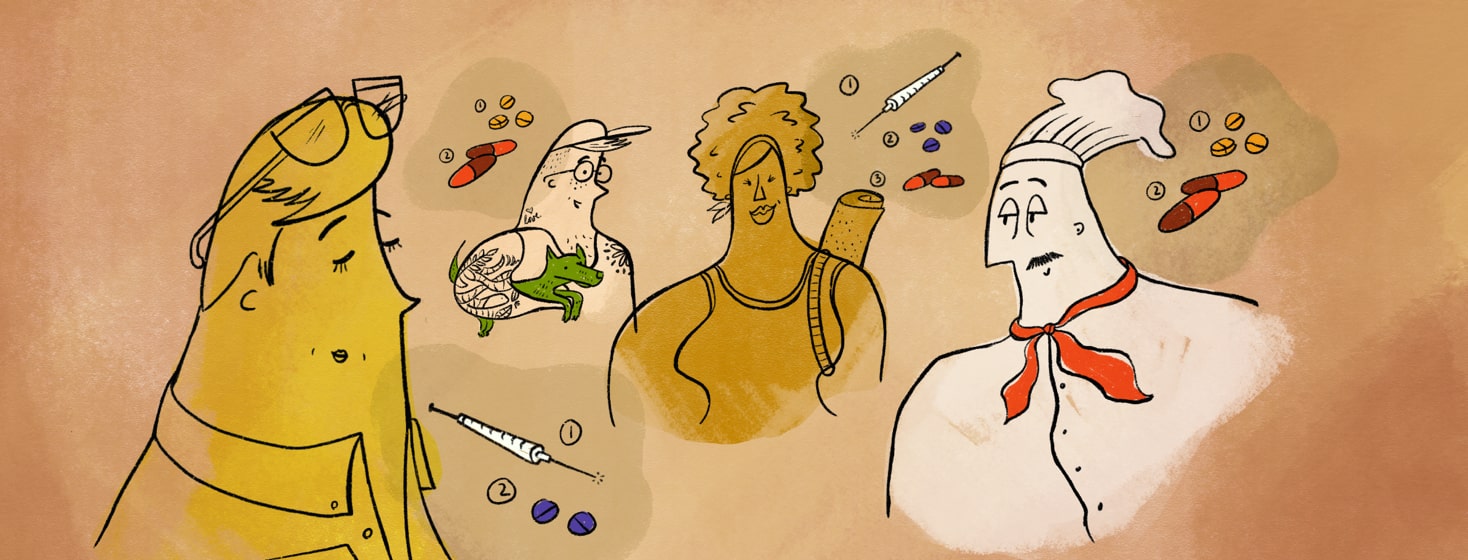Personalized Care: Redefining Treatment Success of HIV
HIV is a manageable chronic condition. This means it never goes away, but there are treatments to manage symptoms and complications. HIV treatment is called antiretroviral therapy (ART). ART requires taking a combination of medicines every day.1,2
Even though HIV is considered manageable, aging with HIV can impact your life. Over time, it is possible for long-term effects of HIV to arise. The specific impacts of HIV can vary depending on the person. Also, long-term treatment with ART can cause its own complications. Because of these variations, it is important to use a personalized approach for treating HIV.3,4
Why is personalized care for HIV important?
There are well over 20 drugs approved by the US Food and Drug Administration (FDA) for ART. These numbers continue to increase. This means there are many treatment options for people living with HIV. There are also about 1.1 million people with HIV in the United States and over 38 million worldwide. All these different people will respond to treatment in different ways, so a personalized approach is important.2,4
This or That
Which HIV treatment do you prefer?
What is the goal of HIV treatment?
Defining treatment success with a chronic condition can be difficult. Traditionally, the goal of HIV treatment is to reduce someone’s viral load to undetectable amounts. This means the amount of HIV in the blood is too small to be detected by a blood test. This also means there is no risk of transmitting HIV through sex.1
However, HIV may impact your health even when your viral load is undetectable. In some cases, HIV is linked to:2,3
- Lower immune health
- Showing signs of aging earlier (premature aging)
- Lower quality of life
- Toxicity from long-term ART use
- Stroke
- Diabetes
- Lung disease
- Heart disease
These complications can be rare and, in some cases, not fully understood. But their existence emphasizes the importance of treatment beyond just viral load.2,3
Featured Forum
View all responsesWhat might treatment success look like?
There are limitations to using viral load as a measure of treatment success with HIV. So, the latest research has worked to define other such measures. Other possible ways to measure the success of treatment include: 2,3
- Effectiveness
- Speed
- Simplicity
- Safety
- Quality of life
Effectiveness may involve your ART plan. This measure involves identifying treatment plans that work well, work quickly, and are less likely to cause resistance. Resistance can happen if the virus mutates and the same treatment no longer works.3
Speed of treatment measures how quickly someone responds to treatment. This might be a measure of success if a treatment is especially fast and lowering viral loads.1,3
People are more likely to follow a simple drug routine. Consistently following a routine makes it more likely to work. So, a treatment might be measured as successful if it is simple enough to easily follow.1,3
The safety of a treatment can also be a way to measure success. A safety success would be if the treatment minimizes risk. The risk may be from HIV complications or ART toxicity.2,3
Quality of life can be measured in many ways. But it is a success if a treatment can minimize the negative impact of HIV.2,3
Factoring in these other measures of success can help identify personal goals and accomplishments with HIV treatment. Consider talking with your doctor about ways to plan for success with your HIV treatment.3

Join the conversation